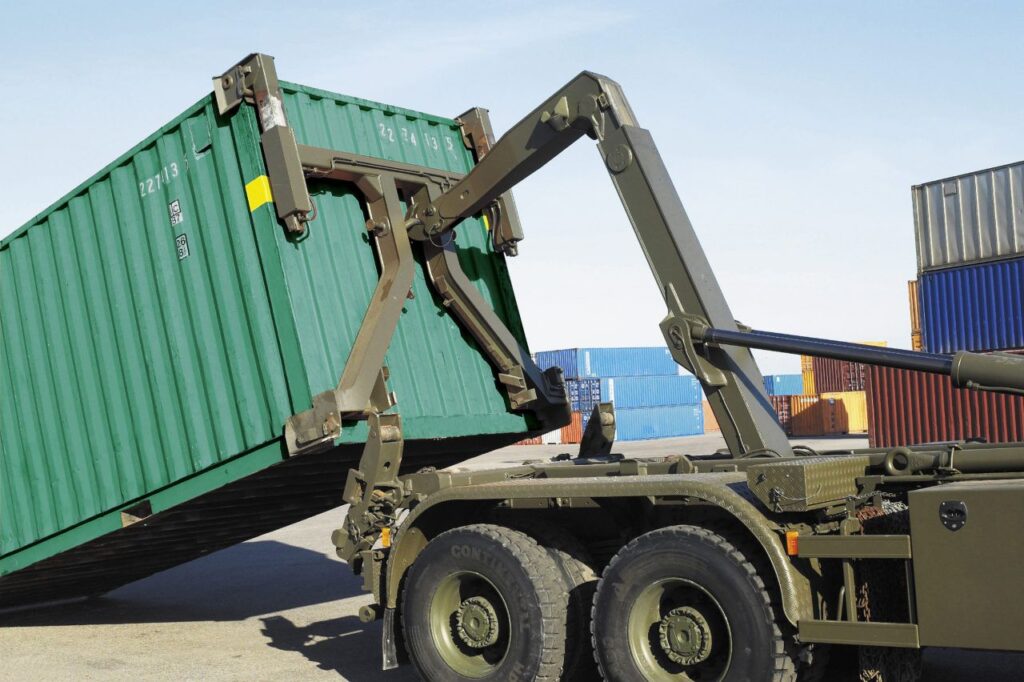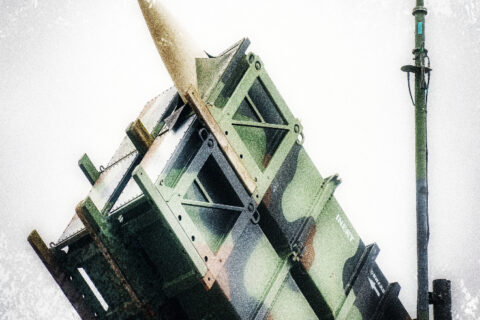The war in Ukraine was over before it started. This has nothing to do with the Ukrainian people – most of whom I believe to be good folks. Rather, this has everything to do with a hyper dependence of Eastern Europe on the United States for its protection, and the inability of the U.S. to keep its promises of that protection. The fact is, the United States is neither functionally nor strategically capable of large-scale warfare for any sustained period of time. It is not a matter of will or money. It is a matter of logistics. The following article will explain the logistical reasons why Russia was always going to win its military and geostrategic objectives in Ukraine, thanks to American limitations. Poland, Hungry, Romania, the Czech Republic, Slovakia, Finland, etc. – this article is for you.
Before I begin, I have worked in both Ukraine and Russia. My counterparts in both countries were extraordinary. This was especially true of my aviation colleagues, at companies such as Volga-Dnepr, where I would routinely utilize AN-124s and IL-76s for my large-scale Middle East, African, Central and Southwest Asian intermodal air-sea-ground projects. This goes back to my military and government contracting days during the height of the Afghan and Iraq Wars. I have nothing against either people. I do, however, support Putin’s war with Kiev for a number of reasons that I have covered in the past on Identity Dixie. I pray for a rapid peace in that which will remain of Ukraine. Hopefully, the Ukrainian people can discharge the yoke of foreign intrigue and globalist manipulation in the aftermath of this war.
Returning to the reason Russia was bound to win this war with Ukraine, the answer is simple: the United States is not structurally designed for a protracted war requiring copious amounts of materials. In essence, the U.S. abandoned its logistical superiority after the Vietnam War. There are both strategic and practical reasons for this shift in military thought. This requires an historic understanding of the origins of this shift and why the United States is ill-equipped to fight modern, 21st Century wars.
From 1861 – 1945, the U.S. military relied on logistical superiority to win wars. Whether it was the extensive use of railways and Northeastern production, or the ability to gain early port dominance, the Union largely won the war because it was able to quickly get men and materials into key locations and then use that numerical superiority – most often haphazardly – against Confederate forces. This concept was expanded when future Rear Admiral/then Captain, Alfred Thayer Mahan, U.S. Navy, wrote The Influence of Sea Power Upon History, 1660 – 1783.
Mahan’s book, which focused on the ability to dominate Sea Lines of Communications (SLOCs) and enjoy strategic dominance on a global scale, compelled an emerging American Empire to annex Hawaii and go to war with Spain to both eliminate a foreign Caribbean threat and simultaneously expand American influence in the Philippines. This dominance of its own regional waters, as well as, an expansion of power in the Pacific was forward thinking for the time. It saw an emerging Asia – specifically Japan – as a threat to its long-term strategic needs. Correspondingly, American political manipulation within Colombia led to the creation of a new country, Panama, and a new canal, designed to facilitate the transference of naval assets between the Atlantic and the Pacific Oceans. This also sped the transfer of large-scale cargo from coast to coast for a new transcontinental power.
World Wars I and II were definitive expressions of American logistical might. The ability to outproduce and transport materials to Europe or (WWII) Asia, ensured an American victory in both wars. Fresh men in World War I were important, but the added fuel, aircraft, food, and mechanized vehicles empowered the remainder of the Triple Entente to steal a victory from Germany on the eve of its victory. In World War II, the Soviet Union, which is often credited with winning the war, could not have succeeded without the Lend-Lease Act. Both Nikita Khrushchev and Georgy Zhukov stated as such in subsequent years. The American ability to arm, equip, and feed the Soviet war machine from 1941 – 1945 empowered the communists to defeat the German Nationalists (and their allies) on the Eastern Front.
During the war in Korea, Halford John Mackinder’s Heartland Theory – effectively the Eurasian dominance concept – directly clashed with Mahan’s naval dominance theory. The ability of the Communist Chinese and the Soviet Union to send men and materials quickly to North Korean forces, or sometimes fight on their behalf, caught a less-committed American/United Nations force off-guard. The end result was a yet-to-be resolved stalemate. This was the beginning of the end of an American reliance on logistical dominance as a function of strategic planning. In effect, the Americans provided little to no solution on its reliance upon extended supply lines to counter a much larger conventional force with matched production capacity closer to the war theater.
Vietnam marked the end of a reliance on American logistics superiority to win wars. During Vietnam, the Robert McNamara-led Department of Defense was able to overwhelm Vietnam with men and materials. In this regard, the U.S. learned some lessons from Korea as it pertained to the use of forward air bases and regional supply missions to ensure material support for combat functions. Where it failed was a misunderstanding of the nature of the conflict. An outstanding book entitled The War Managers, by Douglas Kinnard, highlights the disconnect between senior commanders in Washington, D.C., and local commanders dealing with the realities of a protracted guerilla war. The lessons extrapolated from that war would eventually become that which would be called “The Weinberger Doctrine.”

In 1984, the U.S. Secretary of Defense, Casper Weinberger, effectively codified American strategic thought through a series of questions and answers that can best be summarized as the following: (1) is this in America’s best interest to engage in conflict; only commit forces to such conflicts; (2) only commit to wars in which there is a complete commitment to winning; (3) political and military objectives should be clear and set from the beginning – achieve them and withdraw; (4) continually reassess military needs, committing troops and materials to victory, while simultaneously reevaluating if the cost of combat still serves American strategic priorities; (5) political consensus of the American people and Congress must be assured – do not go into a war without them; (6) combat should always be a last resort.
The Powell Doctrine would effectively add to this “international support” and an “exit strategy.” Ultimately, the Weinberger Doctrine and the refined Powell Doctrine would lead to that which could best be described as a new American strategic embrace of blitzkrieg. A combination of inter-departmental cooperation by virtue of the Goldwater-Nichols Act and a new U.S. Special Operations Command emerging from the disastrous Operation Eagle Claw led to a different type of warfare – fast, politically controlled, and designed for immediate post-operation withdrawal. Desert Shield/Desert Storm was the ultimate culmination of a new American strategic paradigm.
However, some lessons of Desert Shield were completely ignored due to its success. When Iraq swept into Kuwait on 2 August 1990, then President George H. Bush laid down an ultimatum. When that ultimatum was ignored, the President ordered the U.S. Army’s XVIII Airborne Corps into Saudi Arabia on 7 August 1990, led by the elite 82nd Airborne Division. For the next three days, soldiers from the 82nd ate Burger King – the only available food and water available to them beyond the one MRE they each brought as a ready response. It was not until U.S. Navy supply ships, prepared for sustained Marine Expeditionary Units arrived, that the 82nd achieved independent water resources and ammunition in excess of thirty total rounds per soldier. American military planning has grown significantly worse since that time.
After the end of the Cold War, the United States military chose to outsource its long-term military logistics infrastructure through two primary contract mechanisms. In part, this was always the case through the U.S. Merchant Marines (distinct from the Marine Corps). The ability to effectively commandeer commercial vessels for military purposes has been a long-standing tradition in Western military service for centuries. What changed, however, was the nature of disaggregated production and distribution control. This is where my personal experiences allowed me to witness American military logistics inefficiencies firsthand.
The two primary means of transportation augmentation for distribution needs are the Civilian Reserve Air Fleet (CRAF) program and the Universal Services Contract (USC) for ocean transportation. Ocean is the more cost effective and efficient means of transporting larger scale material needs. Air is better suited for speed when cost is not a determining factor and materials are small enough to fly safely. Where these two break down are global capacity and intermodal coordination.
CRAF is hamstrung by the fact that it is a uniquely American program with very few international freight aircraft available within the program. The types of aircraft are limited based on distance and capacity. Companies such as Southwest, a CRAF partner, may be able to augment the fleet with available aircraft from a company like Lynden International – which has older C-130s operating out of Alaska – but the limitations outweigh the benefits. National Air Cargo or Kalita can only service so much in a contractor role – and then they need to have the staff available to manage loading, load masters, pilots, and additional resources to unload. Even when they get to that point, the imperial military is not equipped to manage ground transportation. An overreliance on regional truckers eventually facilitates new contract arrangements to fill this gap – which is primed for exploitation, theft, and simple cultural miscues. The U.S. military is then placed into the position of either burdening the air transportation company with finding ground facilitators or directly contracting with them.
Since the former is easier than the latter, the result is yet an additional layer of disconnect between the strategic needs of the U.S. Department of Defense and the local unit operators supplied through entities like the Defense Logistics Agency or the U.S. Army’s Surface Deployment and Distribution Command. I was the primary ground facilitator in Afghanistan and elsewhere – coordinating between ocean vessel operators, air operators, truckers, hydraulic operators, and enhanced in-transit visibility (EITV) supply tracking entities from 2010-2017 on the ground in more than a dozen countries. At one point, nearly 75% of all cargo exiting Afghanistan moved through my hands in some way. The system is a mess and every time a new suggestion was gaining traction, a commander would get changed and the process would start all over. But it gets worse…

In addition to the capacity restrictions placed on the CRAF program, ocean vessel operators (USC) were at an additional disadvantage through the demand for U.S. Flag Vessels (e.g., Jones Act compliance), which are very rare due to regulatory and insurance reasons, and stevedoring issues at commercial ports. Unlike aircraft, which can fly into and out of friendly air bases, the ocean vessel operators had to deal with commercial operators at often unfriendly countries to facilitate the supply needs of the U.S. military. The local union in Karachi, for example, cared very little about the supply needs of the Marine Corps on Camp Leatherneck. Even when I would personally get those issues resolved, a new level of complexity would emerge: diplomatic note/cargo.
Since imperial war supplies are technically government owned materials, they are required to undergo the importation process of the countries they seek to transit in order to bypass tariff payments. This would manifest all over the world – whether I was working in Pakistan, Uzbekistan, Georgia, or Latvia. Transborder crossings needed paperwork to facilitate deeper supply chain deliveries. Even countries that had direct seaports, such as Djibouti or Iraq, maintained control of their own customs clearance processes that were rarely a priority of the diplomatic staff at the resident U.S. Embassy. Consequently, if you wanted to land armored vehicles into Iraq as part of a training program for the new Iraqi Army, you would need diplomatic clearances to make that possible. But it gets worse, and this is where the U.S. military is incapable of supporting its allies during protracted periods of conflict.
The U.S. military designates cargo “White” and “Green.” Contractor cargo (White) and U.S. military assets (Green) follow separate process requirements and regulatory hurdles. The vast majority of consumption by the American military is White cargo – meaning that the contractors providing the materials are required to ensure the items are delivered to the final recipient, usually at a predesignated distribution facility that is often down range. This could be a mundane product – like toilet paper – to Fort Leonard Wood or it can be a sophisticated blue water Navy component to Diego Garcia. The manufacturer is often tasked with delivering the product to ensure payment (using an antiquated INCOTERM called “FOB Destination” on Contractor Line-Item Numbers – CLINs). In some cases, the terms of the contract may allow for the use of military logistics assets for hard-to-reach areas. Often, however, that is not the case.
The U.S. military does not have a centralized production facility. It outsources production to private companies. That is good. It increases production proficiency. However, it can create supply bottlenecks when those companies are asked to increase production to facilitate immediate demand for a host of reasons – from raw material availability to local labor constraints to licenses. The end result is that an unforeseen increase in production may take six-to-twelve months to meet demand. Winding down production at the end of an engagement can get costly, too. Exit strategies are difficult for private production facilities to meet when they are financially constrained by debt covenants that tie them to production quotas. This has an upstream impact on raw material availability and a downstream impact on transportation/distribution options. None of this is accounted for by senior military officers who are tasked with getting “stuff” into theater – but they are major concerns for the defense contractor.
To put it another way: banks lend money to companies that get new U.S. government contracts. The money continues to flow as long as the accounts receivable (AR) receipts show money will be coming from the U.S. government at some point to pay the tab. The U.S. government requisition process and contracting restrictions place the burden of delivery on the contractor. Thus, from the moment a contract is initiated to the point at which the production company is paid, it may take several months or potentially a year. Meanwhile, the contractor is covering a string of costs and attempting to anticipate the government client’s consumption. When that consumption suddenly ends, AR ends as well, which immediately limits access to capital. The company is then stuck attempting to pay the remaining bills with tightening capital availability. The slowed payments begin to create hesitancy for service and material suppliers. Thus, all of the parties tend to enter U.S. government contracts seeking to front load the costs as best as possible and keep a finger over the “stop” button out of an abundance of caution. All of this harms supply availability for the U.S. military. Of course, the American military never considered working with the banks to overcome this constraint because they do not understand it. But it gets worse…
Even the most cash flush companies still find themselves often wrangling with export procedures that are obscenely burdensome. For something like ice cream or underwear, it is simply a matter of an Automated Export System (AES) filing. But for companies building munitions or weapons systems – such as Raytheon, BAE, or Sikorsky – they have the additional hurdle of securing, processing, and maintaining export licenses. Again, the U.S. military does not have to deal with the DSP-5 or DSP-73 process. Meanwhile, despite the fact that the Directorate of Defense Trade Controls (DDTC) at the U.S. State Department is a governmental agency knowledgeable about the strategic missions of the U.S. DOD or government in general, it does not mean that the license issuing authority will move quickly. Added to this complexity are other governmental agencies (OGAs) that may be involved, such as the Bureau of Industry and Security (BIS) or the Food and Drug Administration (FDA), and now you have new hurdles to consider. But it gets worse…
After getting through the maze of export control regimes, there is a good chance that the importing body on the other side of the world may have additional protocols. Imports into Francophone West Africa of electronic and aeronautical materials will require a Bureau Veritas approval… small arms ammunition or weapons may violate Wassenaar Arrangement restrictions embedded in Romanian import regulations… labeling instructions for United Nations agreed nomenclature for hazardous materials may need to be reviewed and will restrict ground transportation… the fact is, the United States military does not have to deal with any of these concepts when it is moving Green cargo, while White cargo is subjected to every single regulatory hurdle with additional hurdles to comply with Diplomatic Cargo for tariff free importation.

Then, after all of that, the commercial agents still need to arrange domestic transportation for the movement of cargo to the war theater or the military base. This requires ensuring there are no violations of Office of Foreign Assets Control (OFAC) Denied Parties or Foreign Corrupt Practices Act (FCPA) violations as it pertains to bribes. If the product is not stolen in transit, the goods finally arrive. Only then can the invoice get cut – and the clock on advanced payment terms begins.
No one has ever done a substantive top-to-bottom and longitudinal study of the complexities of producing and moving commercially sourced war materials from resource identification to production to delivery – and all of the constraints therein. There is no urgency for such a study or understanding the process because it is entirely outsourced.
A politician makes a judgement call: “Go help Ukraine.” A general accepts the mission, then tells his partners: “Go help Ukraine.” A lower ranking general along, with a few field officers, determine that Ukraine needs X, Y, and Z. They tap into bureaucrats called Contracting Officers (“KOs” / not “COs” to avoid Command Officer confusion) or Contracting Officer Technical Representatives (COTRs) to work with GSA counterparts or other entities to identify suppliers. They issue contracts to suppliers and effectively say: “Send us the bill when you deliver the cargo.” Contractors of varying sizes and scopes begin working on the operation – with varying degrees of success or failure.
Summarizing the complexity of relying on the U.S. military to service the needs of U.S. strategic missions overseas: the American military may be able to provide short-term immediate assistance using its internal and externally contracted transportation options, but the majority will be facilitated by private enterprises that are dependent on extended supply lines and crippled by excessive regulatory hurdles. Not a single American politician has ever considered a blanket provision for wartime exports to meet strategic objectives despite almost two continuous decades of war that relied on external vendors to supply the U.S. military’s needs and not a single senior military commander ever asked them to consider such a provision!
In sum, the United States government is not equipped to handle the material needs of Ukraine in a protracted war. Russia knows this because the Russians are intimately familiar with the supply chain constraints that befell U.S. military operations in Afghanistan by virtue of our reliance on Russian rail to facilitate transportation through the Southern Distribution Network and the Northern Distribution Network. They are also familiar because Volga-Dnepr and Russian Rosoboronexport have been impacted by American International Trafficking in Arms Regulations (ITAR) at different times while serving American military needs. Finally, they are well aware, through their extensive control of Rare Earth Elements how challenging U.S. production of weapons can be.
To be sure, Putin would never allow a bureaucratic constraint to get in the way of supplying his military. If such a constraint were to emerge, his generals would immediately stop the issue in its infancy. American military leaders, by contrast, are divorced from this process. They would not know how to intervene even if they were aware.
Furthermore, the Russians are deeply committed to Mackinder’s Heartland (Eurasian) dominance concept. The Americans, meanwhile, act as if Mahan is still relevant by virtue of their large surface warfare ships, aircraft battle groups, and global network of allied ports – but they have abandoned his most important lesson: SLOCs are designed to facilitate the movement of materials for war and peace. They do not leverage their naval dominance to facilitate military logistics.
Recognizing the supply chain trap and American logistical weaknesses, all the Russians had to do with Ukraine is the opposite of the Americans. Rather than run into a trap – using a blitzkrieg style of warfare – the Russians are methodically using a 21st Century version of siege warfare, allowing the defenders to exhaust their men and materials. As the men die, they are irreplaceable. As the materials are expended or destroyed, they may be replaceable, but the production and transportation restrictions make it painfully slow for the Ukrainians. In effect, the U.S. is not now – nor has been since the 1940s – designed to support an ally depending on American military supplies or enjoys the capacity to deliver them.
Thus, Russia can do what it has always done when it wins wars – remain patient: (1) allow the American and international community to place all of its materials Ukraine in a desperate attempt to vainly show initiative; (2) methodically dismantle the Ukrainian capacity to wage a largescale defensive war; (3) force a desperate international community into demanding a Ukrainian counter-offensive; (4) Ukrainians agree, exhaust their supplies and manpower for temporary success; (5) slowly integrate territory into the Russian Federation – like an ink blot spreading slowly as Ukrainian forces withdraw; (6) encourage more costly counter-offensives; (7) wait until the American and European production and distribution constraints bottleneck; (8) finish off the Ukrainians.
Today, we are between “6” and “7” – and there is nothing the Empire’s military can do about it because it never considered its outrageous logistics deficiencies.
The son of a recent Irish immigrant and another with roots to Virginia since 1670. I love both my Irish and Southern Nations with a passion. Florida will always be my country. Dissident support here: Padraig Martin is Dixie on the Rocks (buymeacoffee.com)






Out-of-ballpark article. It makes me almost suspect you of being a government plant. Just kidding. I want to make only one objection about the effect of the land lease by the U.S. It definitely helped, but in no way would it have changed the outcome of the war. It might have taken longer, but the outcome would have been the same.
Best wishes.
Hello Dixie Serb,
Thank you for reading the article. My thought on lend lease is that the Soviets could have potentially beaten the Germans due to simply overwhelming them with numbers, but I am not sure they could win without it. More likely, the Soviets would have gotten bogged down in a protracted defensive struggle. This would have enabled the Germans to either focus more on the Americans/Brits to their West or – even if they lost to the Americans/Brits – the Soviets would not have advanced through Eastern Europe without Lend Lease equipment. The equipment empowered the Soviets to take the offensive.
God Bless,
Padraig Martin
Thanks for replying. I have interesting article for you:
https://theduran.com/as-evgeniy-prigozhin-sees-it-full-transcript/
I realize a man like you needs to be political, but saying Hawaii was annexed, is like saying the South was annexed, especially to a guy from Hawaii. The US East India squadron safeguarded the opium trade to China and in 1853 they forced Japan to trade with the west at gunpoint. Wall Street has always given the orders to the US military.
I enjoyed your article but it sure had a yankee tone to it.
I waited for your reply to Dixie Serb, I also agree that without lend lease Germany would have easily stopped those Bolshevics, millions of Russians freed by Germany wanted to join their ranks doing so also.
I live where the bankers hauled in Irish labor to dig the copper for Stalins war machine, it is a haunting reminder daily, knowing millions were killed by it, German and Russian. There is a 95 foot tall Mother Mary statue on one of the hills here, where a beautiful Irish Soul called down a miracle from Heaven, and he than had the statue built. I’m in the shadow of it praying for that kind of grace.
For the students of war here are the excerpts from the Prigozhin recommended book “SMO” by Pinchuk published in Russia this year.
There is no better way to improve than to self reflect in what in turn will make Russian military the most powerful on the planet at the end of the war.
^
1/2
Let us analyze the Izyum/Balakleya retreat, which has both the most important strategic importance – which ultimately deprived the Russian troops of the prospect of closing the “Slaviansk Cauldron”, and which led to significant changes in the perception of the SMO in Russian society and government, and as a result initiating the process of partial mobilisation. In fact, the retreat had two waves. And if the first was carried out as part of a rollback to the positions of the city of Izyum and its environs at the beginning of May 2022 as part of the general logic of curtailing the first stage of the SMO, then the second – September, turned out to be quite unexpected and led to a significant transformation of the theater. Izyum was an important strategic hub connecting Donbass and Kharkov, and in theory allowed the Russian forces to close the encirclement of the largest group of the AFU in Donbass. Its abandonment led to the collapse of the entire Kharkov direction, loss of Kupyansk, Balakleya and a large number of other settlements, strengthened the offensive capabilities of the AFU and created a springboard for an attack in the direction of the Lugansk Republic. In fact, this retreat marked the transition of Russia from an offensive operation to unstable defense.
Izyum has become a prime example of mistakes in tactics, failures due to systemic lies in reports, weak motivation, and problems with the use of forces not for their intended purpose. It was in Izyum, which came under the control of the Russian army at the end of March, that the Russian group retreated from Kharkov; large command posts were located here, including those of the army level – the First Tank, 20th, 29th, 35th, 36th armies, 64th and 38th brigades. During the initial battles for the city, falsifications with personnel appeared here for the first time at the system level. Despite Putin’s strict instructions, during the spring battles for the city, some assault army units were staffed by 30-40 percent of contract soldiers. The rest – conscripts and “dead souls”, which allowed playing with reports, rations, property and allowances.
What was the Russian plan in Izyum? As we remember, the completion of the first stage of the SVO assumed the abandonment of the original plan for the lightning-fast capture of Kiev, the reboot of the administrative vertical and the correction of the national policy of Ukraine. The plan for the second stage most likely boiled down to closing the ring around the Donbass grouping of the AFU, cutting it into several cauldrons and gradually destroying them. Izyum’s as strongpoint was quite suitable for this. The road from Izyum to Slavyansk is only 48 kilometers. The operational plan of the Russian advance passed through the settlements of Malaya Kamyshevakha – Brazhkovka – Suligovka with access to the key settlement of Dolgenkoye and subsequent advance through Krasnopolye to Slavyansk. Units of the Central Military District #O were supposed to close the cauldron from the other side. And here all the accumulated military problems of Russia manifested themselves in full.
The laid route seemed logical only when planning on maps, but the proposed offensive passed through forest belts with heights held by the enemy. The settlements encountered on the way were equipped in fortified areas. Numerous recreation centers became AFU strongholds. The summer period and green blossoms allowed the Ukrainians to create numerous ambushes, and the space between them were covered with mines. Attempts to pass through the forests on armored vehicles were unsuccessful – anti-tank mines were installed even on tree branches. The use of demining machines proved to be difficult, and there was not enough equipment. Snipers and aviation in the conditions of green forests showed inefficiency.
2/2
… Moreover, because of Western anti-aircraft systems the use of Russian aircraft and helicopters was episodic, and the aviation itself tried to work at a long distance, which naturally reduced efficiency. Army special forces and volunteer detachments were thrown to mop up the forests, which turned out to be quite wasteful for combat-ready personnel, especially from among the units so necessary for solving special tasks. The village of Dolgenkoe became a symbol of Izyum stagnation.
The tactics chosen by the Russian army leadership boiled down to lazy assaults on the village and adjacent territories stretched along the roads. At the same time, one of the main army laws was almost always violated – the assault on an unsuppressed defense is akin to a crime. The forces allocated for the assaults were insufficient, because of which the personnel were wasted, the assaults turned out to be fatal. Casualties among personnel and equipment increased threateningly and at high speed. At the same time, losses in equipment of the 4th Kantemirovskaya division as part of the First Tank Army stationed in Izyum often exceeded losses in personnel. This means that the very expensive and much needed equipment was simply abandoned. In some cases, the “deliveries” of Russian abandoned trophies to the enemy exceeded the supply of foreign samples from Western sponsors to the Ukrainian army. Subsequently, significant Ukrainian forces began to fight the Russian army with Russian weapons and armored vehicles.
Why did it happen so? We can assume that because of the lies and falsifications of the reports. According to papers, the army units allocated for assaults had one number of personnel, but in fact there were 2-3 times less people. At the same time, their motivation was often at a low level. Right at the front line, contract servicemen massively wrote dismissal reports or simply refused to go into battle, which the commanders were simply afraid to report on. It was here, in Izyum, that the total non-combat readiness of the Western Military District was fully manifested. A relative exception was the forces of the 20th Army based here, but they also showed the whole set of typical army diseases. The various special forces attached to them as an assault reinforcement, on the contrary, being motivated, went forward, but, not having massive support from combat units, were dying. As a result, in the theoretical calculation of “one commando or volunteer for ten soldiers”, the inverse proportion was often observed. At the same time, the form of reporting based on KIA number became fashionable among the army leadership, when the commander in support of his reports that he really tried to do something reported on the dead and wounded soldiers, which was supposed to demonstrate the significance of the efforts.
That’s how military spetsnaz was utilized. Why did this happen? Donbass experience showed that such units were used on the front line not according to their profile, simply because they were the most combat-ready. Or, rather the only combat-ready. Then who will conduct the much-needed reconnaissance, adjust artillery, carry out sabotage activities, destroy command posts, air defense points, bridges, HIMARS, Caesars and 777? The correct answer with this approach: no one. Technical equipment also played a role. Again, the lack of means of communication and coordination led to desynchronization and loss of offensiveness.
At the same time, apparently, the “Izyum standing” was not identified by the command as permanent. As a result, no proper measures were taken to equip continuous defense, with the exception of the most dangerous areas, although military science demanded the opposite. The result was the impossibility of holding back the Ukrainian offensive, which led to the collapse of the entire Kharkov front.